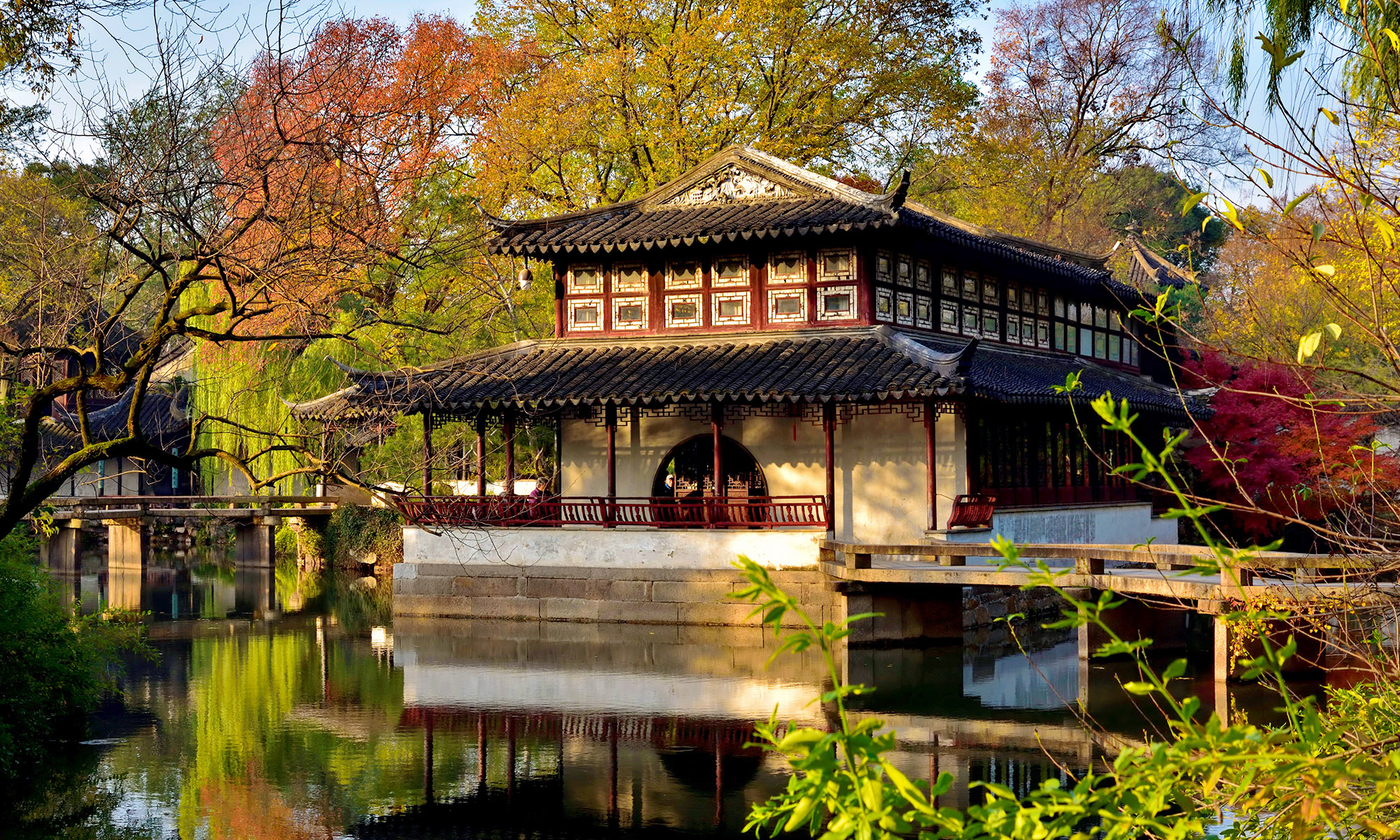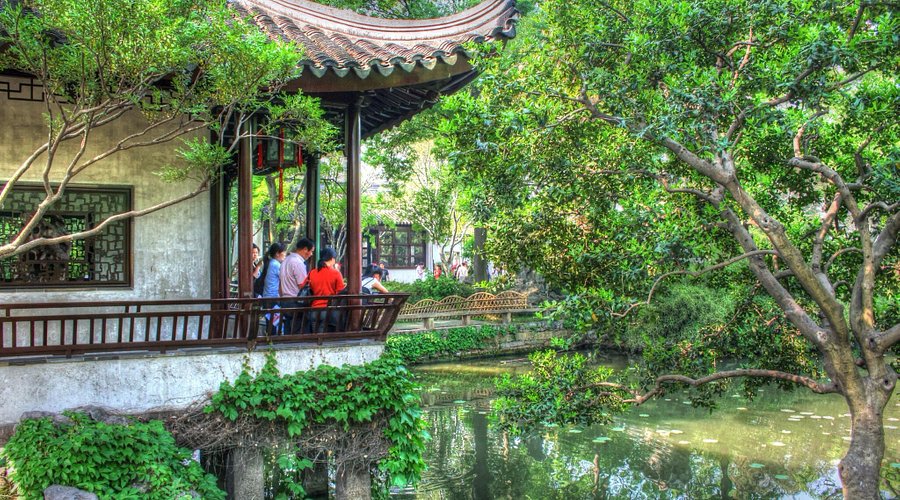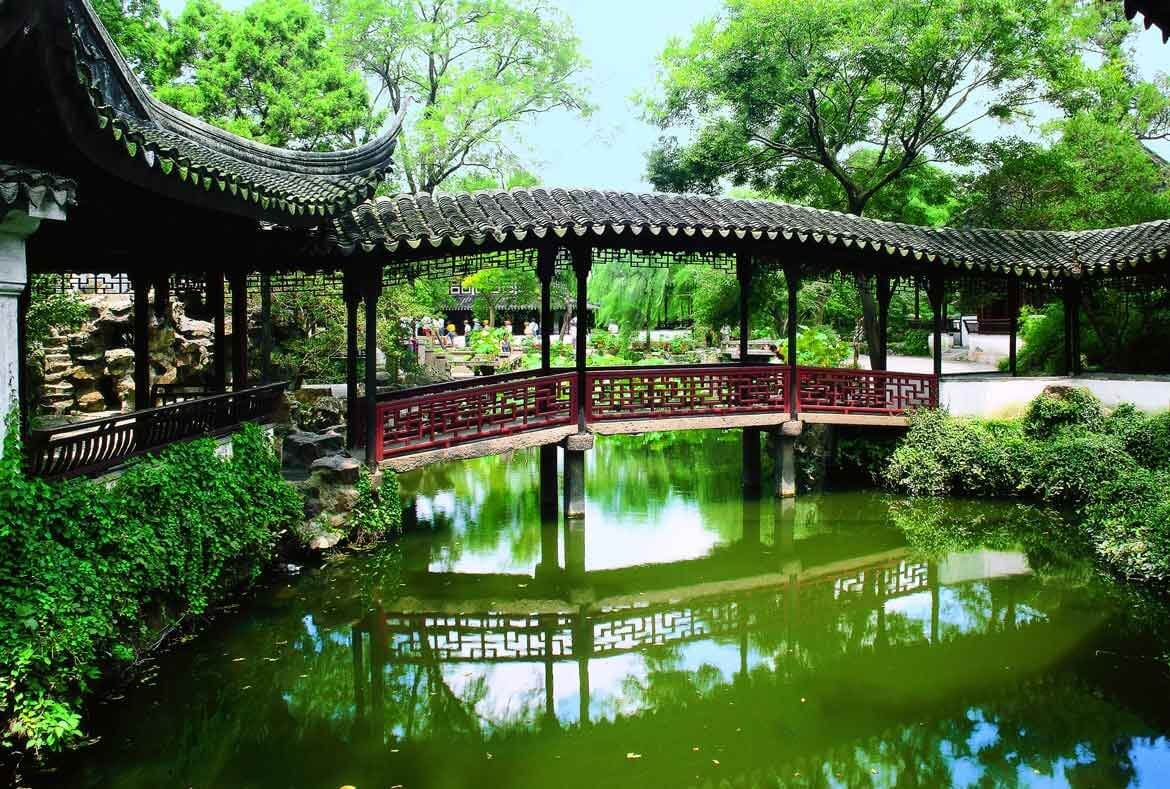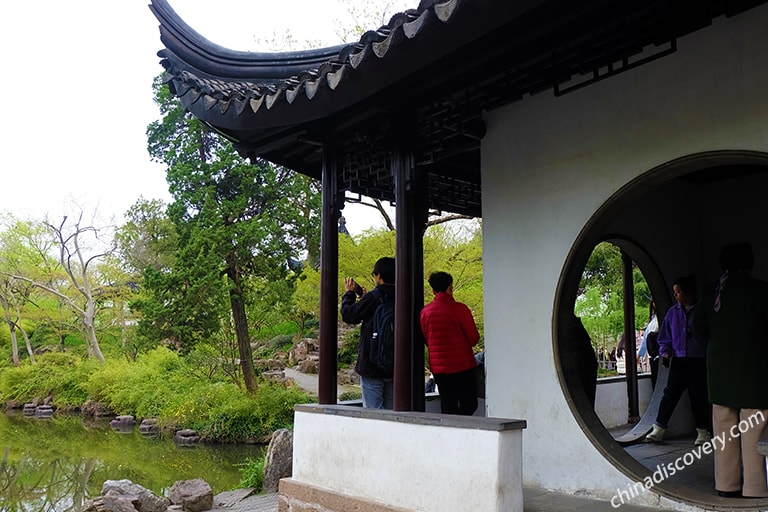The Definitive Guide to Experiencing the Humble Administrator’s Garden
An Essential Guide to Visiting Humble Administrator’S Garden
Nestled in the heart of Suzhou, the Humble Administrator’s Garden (拙政园) stands as a breathtaking testament to classical Chinese garden design, enchanting visitors with its harmonious blend of natural beauty and artistic craftsmanship. Renowned as one of China’s four most famous gardens, it captivates with its intricate layout, serene water features, and an abundance of flora that shifts gracefully with the seasons. The garden is not only a feast for the senses but also a portal into the rich history and culture of the Ming Dynasty, making it an unmissable destination for any traveler.
In this essential guide, we’ll explore the rich tapestry of experiences that await you at the Humble Administrator’s Garden. From practical visiting tips, including admission prices and hours of operation, to highlights of the garden’s stunning features—such as the iconic lotus ponds and elegant pavilions—this guide will equip you with everything you need to make the most of your visit. Whether you’re a history enthusiast, a nature lover, or simply seeking a peaceful escape, the Humble Administrator’s Garden promises an unforgettable journey through one of China’s most cherished landscapes.
In This Guide
- An Essential Guide to Visiting Humble Administrator’S Garden
- The Rich History and Legends of Humble Administrator’S Garden
- Main Highlights: What You Absolutely Can’t Miss
- Planning Your Visit: A Practical Guide
- Tickets: Prices, Booking, and Tips
- How to Get There: A Complete Transportation Guide
- Local Cuisine and Accommodation Nearby
- Frequently Asked Questions
- Final Thoughts on Your Trip
The Rich History and Legends of Humble Administrator’S Garden
A Journey Through Time: The History of Humble Administrator’s Garden
Nestled in the heart of Suzhou, the Humble Administrator’s Garden (拙政园) stands as a testament to centuries of Chinese garden artistry and cultural heritage. Its rich history, punctuated by notable events and colorful legends, captivates visitors from around the world.
The Origins of the Garden
The Humble Administrator’s Garden was originally constructed during the early Ming Dynasty, around 1509, by a retired government official named Wang Xiancheng. This period was marked by a burgeoning appreciation for nature and the arts, leading to the creation of gardens that reflected the ideals of beauty, tranquility, and harmony. Wang sought solace in the garden after a tumultuous political career, aiming to cultivate both his spirit and the surrounding landscape.
The Evolution Through Dynasties
Over the years, the garden underwent various transformations, particularly during the Qing Dynasty when it was expanded and embellished. The garden features a variety of architectural styles, including pavilions, bridges, and rockeries, which serve to embody the philosophical principles of Daoism and Confucianism. This evolution reflects the changing tastes and cultural priorities of each dynasty, showcasing how the garden adapted to the times while retaining its core essence.
The Legend of the Humble Administrator
One of the most enchanting legends associated with the garden centers around its name. The term “Humble Administrator” is believed to symbolize the ideal of modesty and humility in governance. According to local lore, Wang Xiancheng, despite his political stature, often preferred the beauty of his garden to the complexities of court life. This narrative resonates with visitors, inspiring them to reflect on the virtues of simplicity and self-awareness.
Literary Inspirations and Artistic Influence
Throughout its history, the Humble Administrator’s Garden has inspired poets, painters, and philosophers. Many renowned scholars and artists have wandered its paths, drawing inspiration from its serene landscapes. It is said that the garden served as a muse for poets who composed verses that celebrated nature’s beauty, intertwining art with the garden’s aesthetic allure. This literary connection continues to attract cultural enthusiasts who seek to experience the same inspiration.
Restoration and Preservation
In the late 20th century, the Humble Administrator’s Garden underwent significant restoration efforts to preserve its historical integrity and natural beauty. Recognized as a UNESCO World Heritage Site in 1997, the garden stands as a crucial link to China’s historical and cultural narrative. This designation has further solidified its status as one of the four most famous classical gardens in China, ensuring that future generations can marvel at its design and learn about its storied past.
Conclusion: A Living Legacy
Today, the Humble Administrator’s Garden is not just a beautiful landscape; it is a living legacy that encapsulates the essence of Chinese history and philosophy. As international travelers stroll through its tranquil pathways, they are invited to immerse themselves in the tales of its past and the legends that continue to breathe life into this enchanting place. Whether you find peace in its serene ponds or inspiration in its artistic expressions, the garden offers a unique glimpse into the heart of Chinese culture and history.

Humble Administrator’S Garden.
Main Highlights: What You Absolutely Can’t Miss
The Central Lake
At the heart of the Humble Administrator’s Garden lies the Central Lake, an expansive body of water that perfectly reflects the surrounding beauty. This tranquil lake is adorned with charming willow trees and elegant pavilions, creating a picturesque landscape that beckons visitors to pause and appreciate nature. Don’t miss the chance to snap a photo from the iconic bridge that arches over the water, offering a stunning view of the garden’s serene environment. Tip: Visit early in the morning or late in the afternoon when the light is softer, enhancing the reflective quality of the water.
The Pavilion of the Humble Administrator
This iconic structure stands as a symbol of the garden’s philosophy of simplicity and harmony. The Pavilion of the Humble Administrator is an architectural gem, showcasing traditional Chinese design elements with intricate woodwork and stunning views of the surrounding scenery. It’s the perfect spot to sit down with a book or simply soak in the atmosphere. Tip: Check the schedule for cultural performances that occasionally take place here, adding an enriching layer to your visit.
The Stone Bridge
Connecting different sections of the garden, the Stone Bridge is not just a functional pathway but also a picturesque feature of the landscape. This charming bridge, with its classic Chinese architectural style, offers breathtaking views of the garden’s lush greenery and serene water features. Tip: This is one of the best photo opportunities in the garden; be sure to time your visit when the light hits the bridge just right, especially during golden hour.
The Lotus Pond
A visit to the Humble Administrator’s Garden would be incomplete without a stroll by the Lotus Pond, which bursts into vibrant color during the summer months. The pond, framed by lush greenery and traditional pavilions, is a favorite among photographers and nature lovers alike. The sight of blooming lotus flowers is not only beautiful but also steeped in cultural significance, symbolizing purity and resilience. Tip: If you’re visiting in summer, plan to come early to see the flowers in full bloom and enjoy the peaceful atmosphere before the crowds arrive.
The Scholar’s Studio
This quaint area pays homage to the garden’s original purpose: to serve as a retreat for scholars and poets. The Scholar’s Studio is designed to inspire creativity and contemplation, complete with elegant furnishings and a view that invites reflection. This spot encapsulates the spirit of the garden, where nature and art blend seamlessly. Tip: Spend a few quiet moments here to absorb the tranquil energy, perhaps with a sketchpad or journal in hand.
The Bamboo Grove
Wander into the Bamboo Grove and find yourself enveloped by towering stalks swaying gently in the breeze. This area offers a slightly different ambiance, with the rustling leaves creating a soothing soundscape. The bamboo symbolizes strength and flexibility in Chinese culture, making this a significant part of the garden. Tip: Look closely for hidden pathways that lead to quiet nooks — perfect for a bit of solitude amidst the lush greenery.
The Peach Blossom Hill
As spring approaches, Peach Blossom Hill comes alive with delicate pink blooms, transforming the landscape into a dreamy tableau. This area not only showcases the beauty of nature but also serves as a reminder of the fleeting nature of life, a common theme in Chinese art and philosophy. Tip: Bring a picnic to enjoy under the blossoms or simply take a moment to meditate in this enchanting space. The spectacular scenery is ideal for those seeking a moment of peace and reflection.
Exploring these highlights will deepen your appreciation for the artistry and philosophy behind the Humble Administrator’s Garden, making your visit a truly memorable experience.

Humble Administrator’S Garden.
Planning Your Visit: A Practical Guide
Best Time to Visit
The Humble Administrator’s Garden is a year-round attraction, but the best times to visit are during the spring (March to May) and autumn (September to November). During these months, the weather is mild, flowers are in bloom, and the foliage displays vibrant hues. The summer months can be hot and humid, while winter may bring cooler temperatures, but the garden’s serene atmosphere remains enchanting.
Recommended Itinerary
To fully appreciate the beauty of the Humble Administrator’s Garden, plan to spend at least 2-3 hours exploring. Here’s a suggested itinerary:
- Arrival and Entrance: Begin your visit at the main entrance, where you can purchase tickets. Aim to arrive early to avoid crowds.
- Stroll through the Garden: Wander through the various sections—each showcasing distinct landscapes, ponds, and architectural features. Make sure to visit:
- The Central Pond: The heart of the garden, surrounded by willow trees and traditional pavilions.
- The Rockery: Climb the artificial hills for panoramic views of the surroundings.
- The Orchid Pavilion: A peaceful area ideal for contemplation.
- Photography Session: Spend time capturing the exquisite scenery. Ideal spots include the bridges and the reflections in the water.
- Tea Break: Stop by a tea house within the garden to enjoy traditional Chinese tea and snacks.
- Explore Nearby Attractions: If time permits, consider visiting the Suzhou Museum or the Lingering Garden, both located within a short distance from the Humble Administrator’s Garden.
Photography Tips
- Golden Hours: The best natural light for photography is during the early morning or late afternoon. The soft light enhances the garden’s beauty and colors.
- Reflections: Capture the picturesque reflections of trees and pavilions in the water. Look for still moments, especially near the ponds.
- Details Matter: Focus on the intricate details of the garden, such as carvings, flowers, and the textures of the rocks.
- Wide-Angle Lens: If you have a wide-angle lens, use it to capture the expansive landscapes and the harmonious blend of nature and architecture.
What to Wear
- Comfortable Shoes: Expect to do a fair amount of walking, so wear comfortable footwear suitable for uneven paths.
- Weather-Appropriate Clothing: Dress in layers during spring and autumn, as temperatures can fluctuate. Lightweight clothing and a hat are recommended for summer visits, while a warmer jacket may be necessary in winter.
- Sun Protection: If visiting in the warmer months, bring sunscreen and sunglasses to protect against the sun.
Insider Tips
- Visit on Weekdays: If possible, plan your visit for a weekday to avoid the larger crowds typically found on weekends.
- Explore Beyond the Garden: Take the time to explore the surrounding area, including local shops and eateries that offer authentic Suzhou cuisine.
- Guided Tours: Consider joining a guided tour to learn about the history and cultural significance of the garden from knowledgeable guides.
- Seasonal Events: Check the garden’s schedule for seasonal events or exhibitions, which can provide unique experiences and insights into Chinese culture.
- Quiet Corners: Seek out lesser-known areas within the garden for a more tranquil experience. The quiet nooks are perfect for relaxation and reflection, away from the main paths.
With these tips in hand, you’ll be well-prepared to enjoy an unforgettable visit to the Humble Administrator’s Garden, immersing yourself in its timeless beauty and serenity.

Humble Administrator’S Garden.
Tickets: Prices, Booking, and Tips
When planning your visit to the stunning Humble Administrator’s Garden in Suzhou, it’s essential to know the ticketing details to ensure a smooth experience. Below is an overview of the ticket types available, their prices, and what each ticket includes.
| Ticket Type | Price (CNY) | Includes |
|---|---|---|
| Standard Admission | ¥130 | Entry to the garden, access to all areas |
| Reduced Admission (students, seniors) | ¥70 | Entry to the garden, access to all areas |
| Guided Tour (optional) | ¥180 | Entry + guided tour of the garden (approx. 1-2 hours) |
Booking Information
Tickets for the Humble Administrator’s Garden can be booked online or purchased at the entrance. However, to avoid long queues and ensure availability, it is highly recommended to book your tickets in advance, especially during peak tourist seasons.
You can easily secure your admission through various travel platforms or the official garden website. Most online bookings allow for free cancellations, providing flexibility in your travel plans.
Tips for a Memorable Visit
-
Timing: The garden is open from 7:30 AM to 5:30 PM daily. Arriving early can help you enjoy the serenity of the garden before the crowds arrive.
-
Guided Tours: Consider opting for a guided tour to enrich your experience with historical insights and stories about the garden’s design and significance.
-
What to Bring: Remember to wear comfortable shoes as you’ll be walking through beautiful but extensive grounds. A camera is a must, as the picturesque scenery offers countless photo opportunities!
By planning ahead and securing your tickets in advance, you can ensure an unforgettable visit to one of China’s most celebrated classical gardens.
How to Get There: A Complete Transportation Guide
Accessing the Humble Administrator’s Garden
Visiting the Humble Administrator’s Garden (拙政园), one of Suzhou’s most famous classical gardens, is an experience that blends historical beauty with serene landscapes. To ensure a smooth journey to this UNESCO World Heritage site, here’s a complete guide on how to get there and navigate the area.
From the Nearest Major City
Shanghai
By Train:
– Duration: Approximately 30-50 minutes
– Cost: Ranges from $8 to $25 depending on the train class (Second Class, First Class, or Business Class).
– Details: High-speed trains from Shanghai Hongqiao Railway Station to Suzhou Railway Station operate frequently throughout the day. You can check schedules and book tickets online via the official China Railway website or through various travel apps.
By Bus:
– Duration: About 1.5 to 2 hours.
– Cost: Around $6 to $10.
– Details: Long-distance buses depart from various stations in Shanghai, such as Shanghai General Long-Distance Bus Station or Shanghai South Long-Distance Bus Station. Buses run regularly, offering a comfortable ride to Suzhou.
By Car:
– Duration: Approximately 1.5 hours (depending on traffic).
– Cost: Varies based on rental fees and fuel costs.
– Details: Renting a car or using a rideshare app can be a convenient option for those who prefer flexibility. The drive to Suzhou is straightforward, primarily using the G2 expressway.
Nanjing
By Train:
– Duration: 1 to 1.5 hours.
– Cost: Approximately $15 to $35.
– Details: High-speed trains are available from Nanjing Station to Suzhou Station multiple times a day, making this a quick and efficient choice.
By Bus:
– Duration: Around 2 to 3 hours.
– Cost: Approximately $7 to $12.
– Details: Buses leave from various bus terminals in Nanjing, with services running frequently throughout the day.
By Car:
– Duration: Approximately 2 hours.
– Cost: Varies based on rental and fuel.
– Details: Driving from Nanjing to Suzhou is easy via the G42 expressway.
Getting Around the Scenic Area
Once you arrive at the Humble Administrator’s Garden, navigating the surrounding area is straightforward:
Walking:
– The garden itself is best explored on foot. The pathways are well-marked, and the scenic views of ponds, pavilions, and bridges are best appreciated at a leisurely pace. Expect to spend 1 to 3 hours enjoying the garden’s beauty.
Bicycles:
– Renting a bicycle can be a great way to explore the nearby attractions, such as the Lingering Garden and the Suzhou Museum. Rental shops are common near the garden, and prices typically range from $2 to $5 per hour.
Public Transportation:
– Suzhou has an efficient public bus system. Bus stops are located near the garden, making it easy to access other parts of the city. Fares are generally low, usually around $0.50 to $1.
Taxis and Rideshares:
– Taxis are readily available and relatively inexpensive within Suzhou. You can also use rideshare apps like Didi, which operate similarly to Uber.
Guided Tours:
– If you prefer a structured experience, consider joining a guided tour that includes transportation. Many tour operators offer packages from nearby cities, which often cover multiple attractions in Suzhou.
With its rich history and stunning landscapes, the Humble Administrator’s Garden is well worth the journey. Whether you arrive by train, bus, or car, the trip will set the stage for an unforgettable experience in one of China’s most celebrated gardens.

Humble Administrator’S Garden.
Local Cuisine and Accommodation Nearby
Nestled in the heart of Suzhou, the Humble Administrator’s Garden is not only a feast for the eyes but also an excellent gateway to experience the local culinary delights and cozy accommodations. After a day of wandering through the garden’s exquisite landscapes, treat your taste buds to Suzhou’s famous dishes, followed by a restful night in one of the nearby hotels.
Local Cuisine
-
Sweet and Sour Mandarin Fish (糖醋桂鱼)
This iconic dish showcases Suzhou’s culinary finesse. The fish, typically a local mandarin variety, is fried to a golden crisp and then coated in a tangy sweet and sour sauce made from vinegar, sugar, and soy sauce. It’s a must-try for those who appreciate a balanced flavor profile. -
Suan Ni Bai Rou (蒜泥白肉)
A delightful cold dish featuring thinly sliced pork belly, Suan Ni Bai Rou is served with a savory garlic sauce. This dish is perfect for hot days when you want something refreshing yet flavorful. It’s often garnished with sesame oil and served alongside pickled vegetables. -
Sichuan-style Dumplings (红油抄手)
Though originating from Sichuan, Suzhou has put its own spin on these dumplings, filled with minced pork and spices, and drenched in a spicy chili oil sauce. The combination of textures and flavors makes it a favorite snack among locals and travelers alike. -
Suzhou-style Mooncakes (苏式月饼)
If you’re visiting during the Mid-Autumn Festival, you must try these flaky pastries, which are filled with either sweet red bean paste or savory pork filling. They are a delightful treat that reflects the region’s rich culinary heritage.
Accommodation Options
-
Luxury: Pan Pacific Suzhou
Set amidst a picturesque garden landscape, Pan Pacific Suzhou offers a blend of modern luxury and traditional charm. With stunning views of the gardens and a range of high-end amenities, this hotel is perfect for those looking to indulge in a serene escape. -
Boutique: Hotel Soul Suzhou
A stylish choice for travelers, Hotel Soul Suzhou combines contemporary design with local culture. Its vibrant decor and art installations celebrate the spirit of Suzhou, and the hotel’s proximity to the garden makes it a convenient option for exploring the area. -
Budget: GreenTree Inn Suzhou Guanqian Street
For budget-conscious travelers, the GreenTree Inn offers comfortable accommodations without breaking the bank. Located near the famous Guanqian Street, this hotel provides easy access to local shops and eateries, making it a practical choice for those on a budget.
Whether you’re indulging in Suzhou’s culinary gems or relaxing in one of its charming accommodations, your visit to the Humble Administrator’s Garden will be a memorable experience filled with delightful flavors and comfort.

Humble Administrator’S Garden.
Frequently Asked Questions
Frequently Asked Questions about Humble Administrator’s Garden
-
Is Humble Administrator’s Garden suitable for children and the elderly?
Yes, the garden is suitable for visitors of all ages. The paths are generally flat and easy to navigate, making it accessible for children and elderly visitors. However, parents should keep an eye on younger children, as there are water features and areas with rocks. -
Are there English signs and information available in the garden?
Yes, the Humble Administrator’s Garden provides English signage throughout the site. Additionally, many staff members can communicate in English, enhancing your visit with valuable insights about the garden’s history and features. -
How much time should I plan for my visit?
It is recommended to allocate about 1.5 to 2 hours to explore the garden thoroughly. This allows for a leisurely stroll, taking in the beautiful landscapes, and capturing photos without feeling rushed. -
What are the opening hours of the garden?
The Humble Administrator’s Garden is open daily from 7:30 AM to 5:30 PM. It’s advisable to arrive early to enjoy the tranquility of the garden before it gets crowded. -
Is there an admission fee?
Yes, the admission fee is approximately $18. Tickets can be purchased upon entry or online in advance, allowing for a smoother experience. -
Are food and drinks available inside the garden?
Food and drinks are not available for purchase inside the garden itself. Visitors are encouraged to bring water and light snacks if needed. However, there are cafes and restaurants nearby where you can enjoy a meal before or after your visit. -
Can I take photographs in the garden?
Absolutely! Photography is welcomed throughout the garden, and its stunning landscapes provide plenty of opportunities for memorable shots. Just be mindful of other visitors and avoid using flash photography in sensitive areas. -
Is there public transportation available to reach the garden?
Yes, public transportation options such as buses and taxis are readily available to take you to the Humble Administrator’s Garden. It is also easily accessible by foot from many hotels and attractions within Suzhou.
Final Thoughts on Your Trip
As you conclude your visit to the Humble Administrator’s Garden, take a moment to reflect on the harmonious blend of nature, architecture, and history that enveloped you. This garden, celebrated as one of China’s finest, offers not just a feast for the eyes, but an invitation to embrace tranquility and introspection. Wander through its winding paths, admire the delicate interplay of water and stone, and let the serenity wash over you.
Each corner of the garden tells a story, echoing the wisdom of centuries past. It’s a place where art and nature converge, reminding us of the beauty found in simplicity. As you leave, carry with you the garden’s essence—a gentle reminder to find peace and beauty in your own life, just as the humble administrator did. May your journey continue to inspire you, and may you always seek out the hidden gems in every destination you explore. Safe travels!